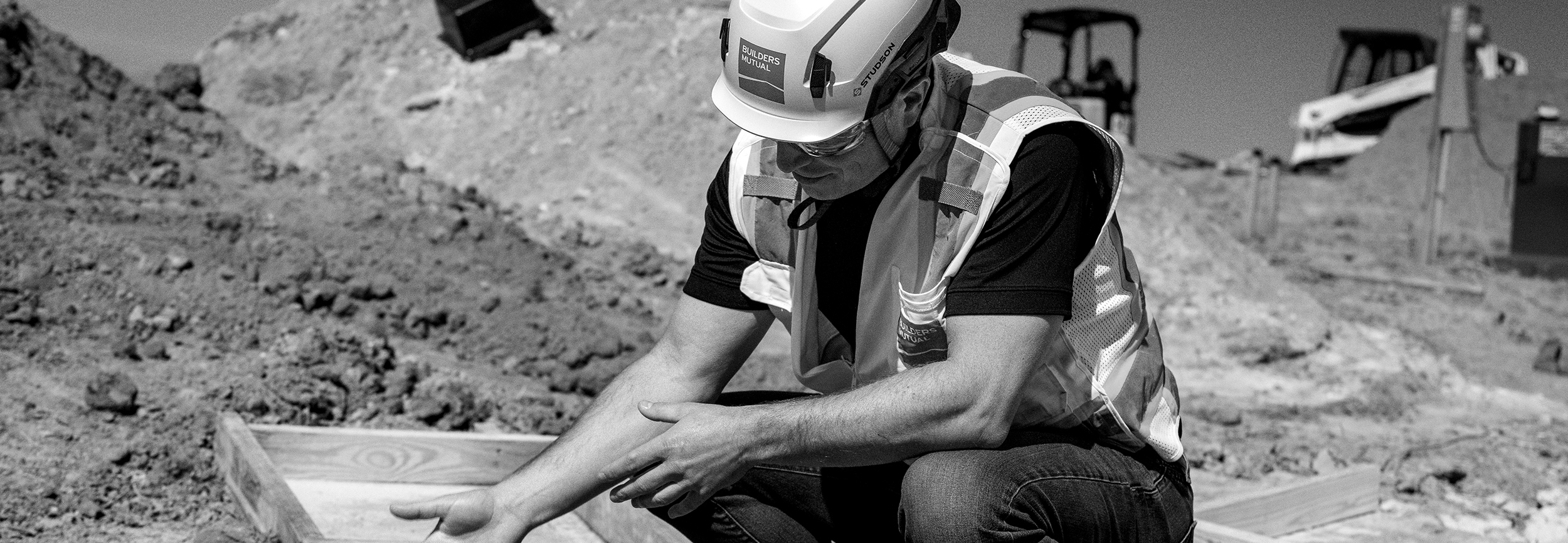According to recent studies by the NAHB, the median age of construction workers in the U.S. is 42. This is actually a year older than the median age of the overall national labor force, and it’s making a significant impact on the job-site today—both in challenges and in benefits.
Builders Mutual Senior Risk Management Consultant Tara LeDuc takes a look at this issue, sharing ways General Contractors (GCs) can take advantage of the mature workforce while also reducing the distinctive risks associated with growing older.
Why not retire?
In general, our culture is seeing people work much longer than members of previous generations, and the same is true on the construction site. Perhaps individuals didn’t plan for retirement, so there is no choice but to keep working. Or perhaps a plan was in place, but the recession put a hole in the retirement blueprint, and now it’s simply a matter of recovery. Effective planning aside, people are now healthier and celebrating more birthdays than ever, allowing construction workers to continue in the industry well beyond their 30s and 40s.
Lower risk, higher price
Here is a somewhat surprising fact: workplace injuries are less frequent with older workers. Experience makes a difference, as older employees tend to stay aware of their surroundings and be less distracted from the job at hand. However, when injuries do occur with this population, they are more severe—and costly.
Typically, job-site injuries for older workers involve strains, sprains, and back injuries—and “bouncing back” isn’t as easy as it once was. Recovery takes much longer, often involving physical therapy or even surgery. Workers’ Compensation claims are higher, and the GC is short a trained, capable employee, leaving a gap that can affect profitability. The costs are high for everyone involved.
Embracing maturity
Working on a construction site is, obviously, physically demanding. So how can GCs make the most of older workers while also being cognizant of their growing physical limitations? The key is to focus on the strengths of mature employees and accommodate any weaknesses or limitations.
- Consider task shifts. Since swinging a hammer for eight hours isn’t the ideal workday for a 50-year-old, GCs could consider implementing split shifts. In other words, the employee could spend half the day doing physical labor and then spend the other part of the day in a supervisory role, ensuring safe and efficient practices on the job-site.
- Create a mentorship program. Someone who has been in the industry for decades is an ideal mentor for younger workers. Experience breeds wisdom, and wisdom needs to be shared. Those in their teens, 20s, and even 30s can benefit from older workers showing them the skills to work smartly and safely. Mentors can also coach the young guns on how to develop in their roles and pursue growth in the industry.
- Adapt the job-site. Risks on the job-site can be mitigated through implementation of adaptations for older workers. Be creative, perhaps rotating people through various tasks to minimize repetitive actions. Improving ergonomics is an action that benefits older and younger workers alike. For example, purchase lighter materials or use machinery (like a forklift) that supplements or replaces human efforts.
Switching from ladders to lifts is another valuable modification that maximizes mature workers and minimizes risk for everyone. Boom lifts and man-baskets lower strain on the body, and they’re much safer than ladders and scaffolding, considerably reducing fall risk. Although this motorized mobile equipment requires additional training, the aging workforce, in particular, will learn quickly and benefit significantly.
Gray matters
Value older workers, but prepare for their exits ahead of time.
When retirement approaches, offer cross-training to fill the gaps.Be willing to offer flexible work schedules or to place an older worker in a supervisory role for quality and safety.
Use retired employees as a temporary workforce when needed.
Let’s talk about it.
The aging workforce in our industry is a reality, and the trend of older workers is growing. General Contractors and business owners need to address this fact, altering their expectations and making shifts to job-site functions that improve both safety and longevity. Because profitability is at stake and good workers are hard to come by, it’s foolish to turn a blind eye.
So we all need to talk about it. It’s a great topic for Toolbox Talks, evaluations, and meetings. As challenging as it may be to accept this job-site trend and take the necessary actions to appropriately deal with it, the greater struggle is within the aging worker. Admitting you’re getting older is hard. And making adjustments to “act your age”—especially when it impacts your livelihood—is even harder.
Start a conversation and embrace these adaptations. You’ll find that effectively addressing your aging workforce actually solves another ongoing business issue: the labor shortage. And until we are able to resolve the labor shortage in other ways, successfully sustaining the current graying workforce is imperative.
Learn more about dealing with the aging workforce on your job-site. Contact your Builders Mutual Risk Management Consultant today.




 Find an
Find an